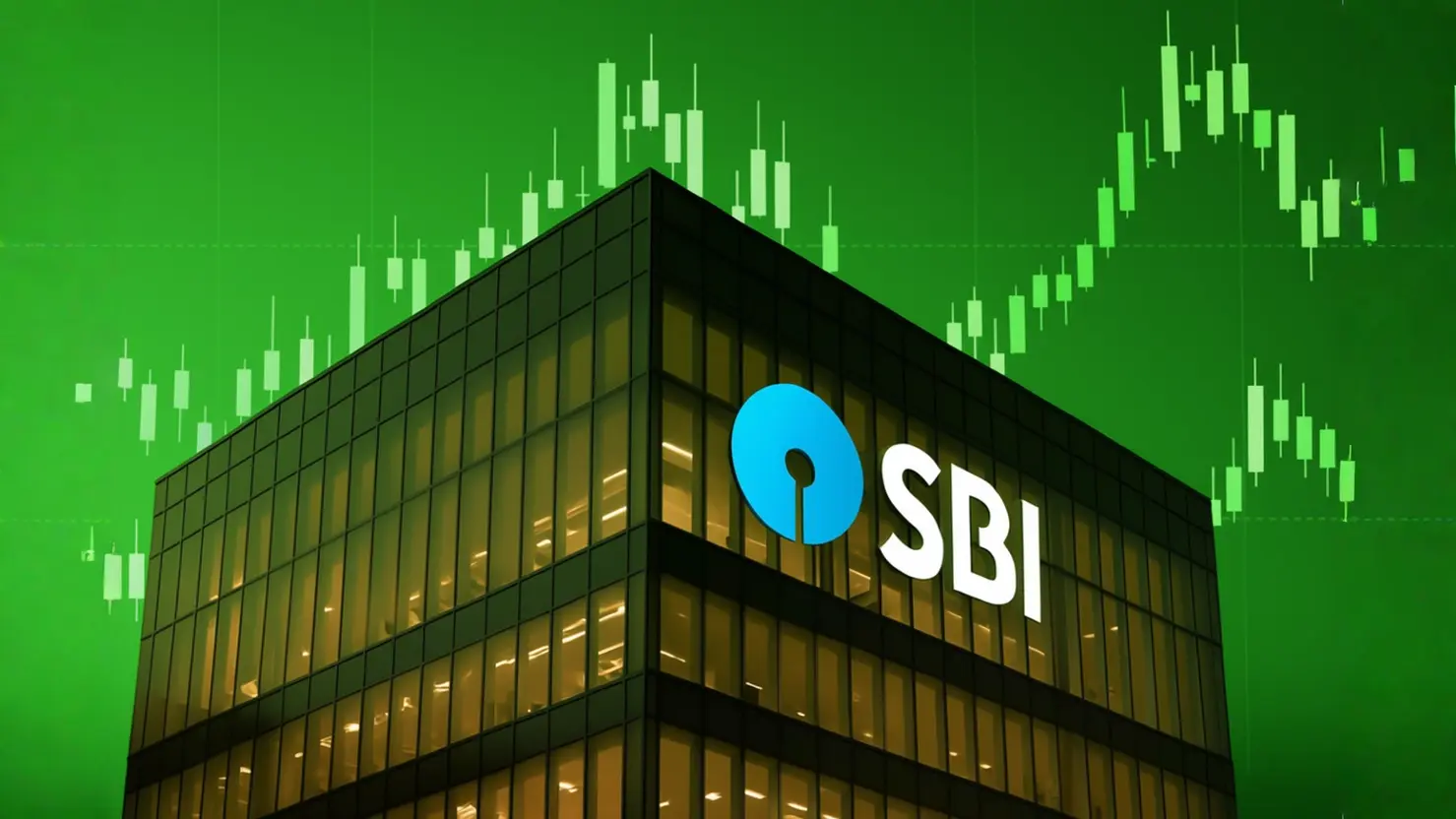Author: Aditya Pareek | EQMint | Market News
Mumbai, November 4, 2025 – The State Bank of India (SBI) — the country’s largest lender — reported a 10 percent year-on-year rise in consolidated net profit to ₹20,159.7 crore for the second quarter (Q2 FY26), supported primarily by one-time gains from the sale of its partial stake in Yes Bank.
The bank’s net interest income (NII), a key measure of lending profitability, rose 3.3 percent year-on-year to ₹42,985 crore, compared to ₹41,620 crore in the same quarter last year.
According to the lender’s financial disclosure, SBI divested 13.18 percent of its stake in Yes Bank on September 17, 2025, at ₹21.50 per share, earning ₹4,593.22 crore from the transaction. This gain was recognized as part of exceptional items and will be transferred to the capital reserve over the coming quarters.
Following the divestment, SBI’s stake in Yes Bank now stands at 10.78 percent as of September 30, 2025. The remaining investment continues to be classified as an associate.
Asset Quality Shows Sequential Improvement
SBI reported a noticeable improvement in its asset quality during the September quarter. The gross non-performing asset (NPA) ratio dropped to 1.73 percent, down from 1.83 percent in the June quarter, while net NPAs declined to 0.42 percent from 0.47 percent sequentially.
In absolute terms, gross NPAs fell to ₹76,243 crore from ₹78,039.7 crore in the previous quarter, and net NPAs dropped to ₹18,460 crore from ₹19,908 crore.
This marks one of the strongest NPA performances by SBI in recent years, highlighting improvements in recoveries and better credit quality across retail and corporate portfolios.
“The improvement in asset quality reflects consistent credit monitoring, strong recovery performance, and steady loan growth across retail and SME segments,” said an SBI official.
Provisions and Margins
The lender’s provisions rose to ₹5,400 crore in Q2 FY26, compared with ₹4,757 crore in Q1 and ₹4,506 crore a year ago. Despite higher provisioning, the bank maintained stable earnings due to one-time gains and growth in operating income.
However, the domestic net interest margin (NIM) — a key profitability indicator — narrowed by 18 basis points year-on-year to 3.09 percent, compared to 3.27 percent in Q2 FY25.
Analysts attribute this margin compression to higher funding costs amid rising deposit competition and a shift toward high-cost term deposits.
One-Time Gains Boost Profitability
Apart from the Yes Bank stake sale, SBI also recorded an additional ₹25.46 crore from the sale of its stake in Jio Payments Bank during the quarter.
These exceptional gains helped offset moderate growth in NII and rising provisions. Without these one-offs, the bank’s pre-provision operating profit (PPOP) declined 6.77 percent year-on-year and 10.6 percent sequentially.
Nevertheless, operating profit rose 8.91 percent year-on-year to ₹31,904 crore, up from ₹29,294 crore in Q2 FY25, reflecting overall business stability.
Strong Credit Growth Across Segments
SBI’s loan book continued to expand robustly, with whole bank advances rising 12.73 percent year-on-year, while domestic advances grew 12.32 percent.
- Retail advances jumped 15.09 percent YoY, supported by growth across key retail segments.
- SME advances grew 18.78 percent YoY, reflecting strong small-business demand.
- Agricultural loans expanded 14.23 percent YoY, while personal loans grew 14.09 percent YoY.
This diversified growth pattern underscores SBI’s focus on expanding retail lending while maintaining credit discipline.
“We are seeing consistent traction in retail and SME credit segments, with strong asset quality and moderate risk levels,” said SBI’s Chairman Dinesh Kumar Khara in the post-results statement.
Interest Income and Expense
During Q2 FY26, SBI reported interest income of ₹1,19,654 crore, marking a 5 percent increase from ₹1,13,871 crore a year ago.
Meanwhile, interest expenses rose 6 percent year-on-year to ₹76,670 crore, compared to ₹72,251 crore in Q2 FY25, reflecting a gradual rise in the cost of deposits.
Despite higher expenses, the lender managed to maintain a healthy interest spread owing to continued loan demand and improved recovery in stressed assets.
Strategic Focus: Strengthening Balance Sheet
SBI management highlighted that the gains from the Yes Bank stake sale would further strengthen the lender’s capital reserves and support future lending growth.
The bank also reiterated its focus on digital transformation, rural credit expansion, and sustainable lending practices as part of its long-term growth strategy.
“Our strategic focus remains on strengthening the balance sheet, improving cost efficiency, and deepening our digital footprint across India,” Khara said.
He also noted that the bank expects credit growth of 12–13 percent for FY26, supported by strong retail momentum and a revival in corporate lending demand.
Market Reaction and Analyst Outlook
Market analysts have largely viewed SBI’s Q2 FY26 performance as steady but aided by one-offs. While the stake sale gain boosted profitability, moderate NII growth and margin compression suggest near-term pressures on core earnings.
“SBI’s Q2 numbers are healthy, but the bottom line was significantly influenced by the Yes Bank stake sale,” said Ravi Gopal, senior banking analyst at ICICI Securities. “Core profitability growth remains moderate due to softer NIMs and higher provisions.”
However, analysts remain optimistic about the bank’s medium-term outlook, citing its robust balance sheet, low NPAs, and consistent loan growth trajectory.
Shares of SBI were trading marginally higher on the Bombay Stock Exchange following the earnings announcement, reflecting investor confidence in the bank’s asset quality and steady earnings visibility.
Outlook
As SBI continues to consolidate its leadership in India’s banking sector, its performance in the second half of FY26 will hinge on interest rate trends, deposit growth, and the evolving credit cycle.
With the bank maintaining strong capital adequacy and improving loan mix, analysts expect FY26 earnings to remain resilient, supported by healthy credit demand and stable asset quality.
For more such market updates visit EQMint
Disclaimer: This article is based on information available from public sources. It has not been reported by EQMint journalists. EQMint has compiled and presented the content for informational purposes only and does not guarantee its accuracy or completeness. Readers are advised to verify details independently before relying on them.





